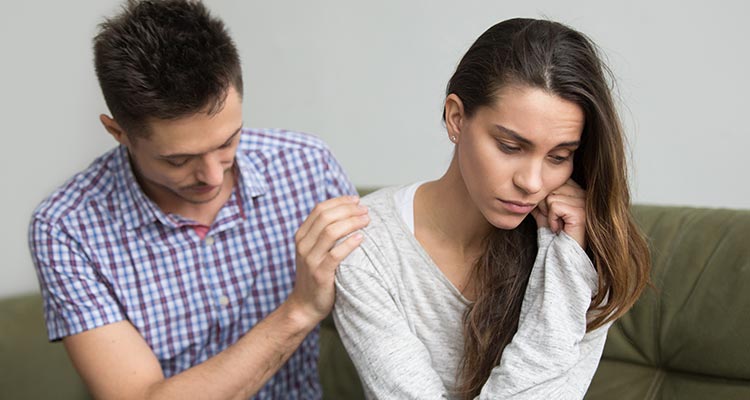It may be difficult to understand how someone is in such a terrible situation and could have feelings of love, dependence, or concern for the person or people abusing them. This is a case of trauma bond. While you may not understand it if you’ve never been in a situation that involved cyclical abuse, it’s pretty straightforward. The bond forms out of the basic human need for attachment to survive. From there, an abused victim may become dependent on their abuser. Add in a cycle in which an abuser promises never to repeat the victim and gains the victim’s trust repeatedly, and you have a complex emotional situation that affects even people who seem very emotionally strong. Let’s see the pre-existing signs of trauma bond.
What is a Trauma Bond?
If you’ve ever questioned why it’s hard for people to leave painful partnerships, it’s important to understand the concept of trauma bonding—which points to an abusive and distressing relationship with brief moments of positive reinforcement. Continue to read down because I am going to give you an exclusive breakdown of the trauma bond.”
“Trauma bonding is the formation of an emotional attachment between a person and their abuser, which often makes the victim of the abuse feel compelled to stay in the relationship”.
Trauma bond signs frequently show up in romantic relationships but also extend to dynamics with power imbalances including, but not limited to, abusive parent-child relationships, sex trafficking, military training, fraternity hazing, kidnapping, cults, and hostage situations. The situation can vary, but fundamentally, it’s about dependency and having someone abusive to fulfil your emotional and spiritual needs. The attachment pattern alternates between devaluation and intimacy. The person you want to console you the most is the one hurting you. Keep in mind that trauma doesn’t just happen in relationships but also in:
- Child abuse
- Incest situations
- Elder abuse
- Exploitative employment
- Kidnapping or hostage situations
- Human trafficking
- High-control religious environments
Top Trauma Bond Signs
Here are some common signs that showcase trauma bonds, which are normally overlooked.
#1. You defend their bad behaviours.
Making excuses for your abuser remains one of the most dangerous signs of a trauma bond. The victims tend to always make excuses for their abuser. They even go as far as admitting that it was their fault. If the victim is a female (which mostly is), they’ll keep on saying things like “I made him angry”, “he is under pressure from work”, and things like that.
#2. Pleasing the abuser
Next to making excuses for the abuser is pleasing them—another one of the many signs of a trauma bond. Someone who is being abused might believe that pleasing the abuser will keep things from escalating… or genuinely want to please the abuser because “they do things for me” (like provide financially). Hormones can also play a role — the intense love shown during the cycle of abuse causes the release of dopamine, which serves as a “reward” for the abuse. It’s similar to how people become addicted to any other high-dopamine-producing process, like gambling or sex.
#4. Coercive control
A key feature of trauma bonding is coercive control. “Coercive control is a pattern of oppressive behavior intended to control someone and strip away their sense of self,”
Coercive control can include:
- Direct or indirect isolation (e.g., Your friends and family can’t stand your partner and thus start to distance themselves from you)
- Deprivation
- Monitoring and interrogating you
- Limiting access to finances
- Physical and emotional abuse
When subject to coercive control, a person may eventually start to self-perpetuate these behaviours themselves—monitoring themselves, depriving themselves, and isolating themselves. To make it even more disorienting, trauma bonding is characterized by cognitive dissonance, which creates confusion. You may start to twist and view love through pain, therefore filtering your partner’s abusive actions as OK and out of a place of love. Even though you try to downplay the fighting, you’re still afraid of what your loved ones would think if they really knew. You may keep the true shadow side of the relationship and its problems to yourself out of shame.
#5. Not being able to leave
The power imbalance can also explain why people sometimes return to their abuser after leaving—they feel unable to exist outside the relationship. Because trauma bonds are powerful, it can take outside help to break them. That usually means therapy.
#6. Hoping to change them
If they would just stop [abusive behaviour], we’d have the perfect relationship. ” Because there are good times in the relationship that cause the victim to feel love, it may feel like change is possible. But those good times aren’t signs that the abuser is capable of changing — they’re attempts to coerce the victim into staying. Often, abusers will temporarily make the changes their partner requests, only to return to perpetrating the abuse shortly after.
What Does Trauma Bonding Feel Like?
People sometimes think trauma bonding is simply bonding over shared traumas or that it’s just about overcoming obstacles and hard moments together. In truth, trauma bonding is a feature of abusive relationships. In practice, trauma bonding looks like a compulsive cycle of wanting to please your partner to avoid setting them off, followed by an incident of physical, emotional, or verbal abuse, and then a honeymoon period where all seems well again. Your partner may remorsefully cry to you, saying it wasn’t their character and they’ll never do it again, equally fueling your fear and trust in them. You want to believe it will improve, so you stay. Yet the pattern continues.
What Does a Trauma Bond Relationship Look Like?
Trauma-bonding relationships take shape due to the body’s natural stress response. When you become stressed, your body activates your systematic nervous and limbic systems—or the part of the brain that regulates emotions and “motivated behaviours,” like hunger or sexuality. This activation is commonly known as . the fight or flight stress response “When that sympathetic activation is in control, the parts of our brain that do things like long-term planning or risk analysis in our prefrontal cortex are shut off,” Dr. Powell says. “They’re not able to be as effective because our brain is focused on just getting us through this trauma
How Does Trauma Bond Start?
When someone’s main source of support is also their abuser, a trauma bond can develop. An abused person may turn to the abuser for comfort when they are hurt, even if they were the reason.
A person may develop a trauma bond because they rely on the abusive person to fulfil their emotional needs. For example, a child relies on their parent or caregiver for love and support. If that caregiver is abusive, the child may come to associate love with abuse. Believing that this association is normal, the child may be unable to see the abusive caregiver as “bad.”
The child may instead blame themselves for the abuse as a way of making sense of what is happening to them. This allows the caregiver to continue being “good” in the child’s eyes, which reinforces their bond.
How Do You Fix A Trauma Bond?
First and foremost, try to release any and all self-blame you have about the relationship. This can be much easier said than done for many survivors, but it can be freeing just to know that you did nothing to cause or deserve any abuse you’ve experienced. Trauma bonds happen so stealthily that it can be really difficult to detect any patterns until they’ve continued to happen over time or unless you know exactly what to look out for.
#1. Disengage & Retract From the Situation
While it may seem counterintuitive to solve the problem, it may be useful for you to disengage and remove yourself from the situation, especially if it has the potential to become dangerous. In this situation, disengaging and retracting can be very helpful for you long-term to help mitigate the heightened emotions associated with a trauma bond. If you find yourself wanting to soothe your partner in this situation, it may be a sign that you are in a trauma bond or a dependent relationship, and you should allow your partner—and yourself—to self-soothe.
#2. Face Your Feelings
When you are in a dependent or trauma-bonded relationship, it can become normal for you to push your negative feelings aside to resolve conflicts and appease your partner. Don’t try to run or avoid your feelings, but rather try to identify them at the moment and take steps to address them immediately. By acknowledging your feelings, you are showing that you recognize and care about the way the dynamics in your trauma bond impact your emotions and mood.
Once you identify your feelings and accept them, you can begin to work towards moving forward for yourself. It can be hard to move on from a trauma bond right away, but allowing yourself to feel your feelings will give a clearer picture of the impact of the relationship and may motivate you to put yourself first.
#3. Be Kind To Yourself
Being in an abusive relationship can be devastating to your self-esteem and emotional well-being. Be mindful of the things you say to yourself. Remind yourself often that you have many positive qualities and that you deserve happiness. Be gentle with yourself when you stumble. You’re learning a new way of living, and it takes time.
#4. Give Access To Healing
You are deserving of health and happiness. To want these things is not selfish. Healing starts with giving yourself permission to do what you need to do to engage in the healing process. You are allowed to grow and move on from situations and relationships that do not serve you.
What Happens When You Break A Trauma Bond
Breaking a trauma bond can feel insurmountable at times. A relationship often feels draining, crazy-making, or outright toxic. There’s a part of you that knows the relationship is unhealthy and wreaking havoc on your mental health, but the idea of leaving is terrifying. Maybe leaving even seems impossible because you’ve tried many times to no avail. But when you follow the guides mentioned above and open up to people, good people, not just anybody. It is not going to be easy, but with a gradual step, you will be free.
What are the seven phases of trauma bonding?
- Trust & Dependency.
- Criticism.
- Addiction to the Cycle.
- Loss of Self Manipulation & Gaslighting.
- Love Bombing
- Resignation & Giving Up
How trauma bonding starts.
Trauma bonding happens when a narcissist repeatedly mistreats a victim, feeding the victim’s need for approval and love. Trauma bonding frequently takes place in romantic relationships, but it can also happen with acquaintances, non-romantic family members, and coworkers.
Can trauma bonds become love?
Despite the abuse victim’s best efforts or hopes to the contrary, a trauma bond cannot be repaired into a healthy relationship. It’s frequently misconstrued as love.
Conclusion
I really hope this post was able to educate you on potential causes and the risk of letting that bond get the best of you, especially if you find that you experience trauma ties in your relationships.



